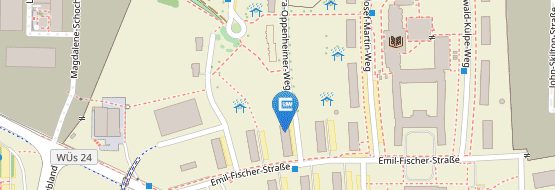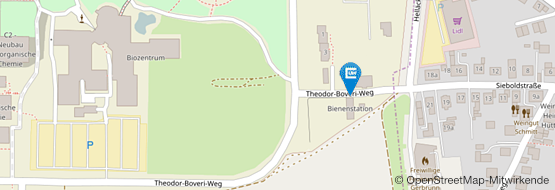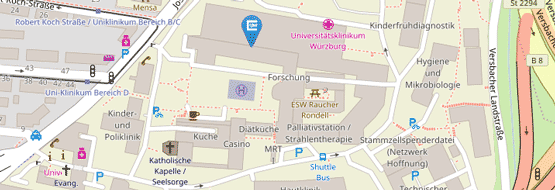Past joint projects

ADAPT
Adaptation of Alpine Pollinators in Times of Global Change
Alice Classen, Fabienne Maihoff, Janika Kerner, Kristof Brenzinger
Funding: Bayerische Staatsministerium für Bildung und Kultus, Wissenschaft und Kunst
Summary: ADAPT investigates how pollinators respond to climatic changes. We explore this at different levels of biological organization, i.e. from a molecular level up to the communtiy level. We are one of the Junior research groups in the Bavarian climate research network (bayklif).
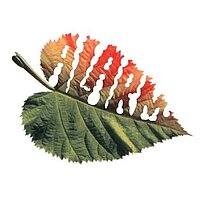
ALARM
Assessing large-scale environmental risks with tested methods
Ingolf Steffan-Dewenter, Catrin Westphal, Birgit Meyer
Funder: EU (FP 7), Februar 2004 – Januar 2009
Summary: ALARM is an Integrated Project (IP) under the 6th EU Framework programme. It combines the expertise of 54 partners from 27 countries. The general objectives are to assess and forcast large-scale shifts in biodiversity and ecosystem functioning. The focus is on risks consequent on climate change, environmental chemicals, rates and extent of loss of pollinators and biological invasions including pathogens and the development of ecological and socio-economic risk indicators. The Pollination Module with 10 partners (coordinated by Ingolf Steffan-Dewenter) aims to mitigate risks for pollinator diversity and to ensure sustainable pollination services in the future and has the following main objectives: (1) Quantify distribution shifts of key pollinator groups across Europe, (2) Determine the relative importance of drivers of pollinator loss (land use, climate chance, environmental chemicals, invasive species), (3) Measure the economic and biodiversity risks associated with the loss of pollination services in agricultural and natural ecosystems, (4) Promote the conservation and sustainable use of pollinators in natural and agricultural ecosystems, and (5) Develop predictive models for pollinator loss and consequent risks.

AMIGA
Assessing and monitoring impacts of genetically modified plants on agro-ecosystems
Ingolf Steffan-Dewenter, Stephan Härtel, Nadja Danner
Funder: EU (FP 7), Dez 2011 – Nov 2015, Subproject: Environmental impacts of GM crops on pollinators (WP6)
Summary: Bees are the main pollinators of agricultural crops and wild plants worldwide. There is concern that widespread commercial cultivation of genetically modified (GM) crops could harm pollinator populations but standardized sampling and laboratory testing methods as well as data on the status of pollinators in agricultural landscapes before the introduction of GM crops are widely lacking. In our AMIGA project we will study (i) the effects of GM crops on in vitro reared bee larvae, (ii) combined effects of multiple stressors (disease, food quality, GM crops) on pollinators, (iii) the exposure risk of honey bee colonies to potential GM crops in agricultural landscapes and (iiii) monitoring bee diversity in different European biogeographic regions. Based on results obtained in the project, we will harmonize sampling and testing methods across Europe to minimize risks of GM crops to important pollinator species. The project is part of a larger EU consortium of 22 working groups from 16 countries working on Assessing and Monitoring the Impacts of Genetically modified plants on Agro-ecosystems.

BiodiversitiyExploratories-Arthropods II
Biodiversity Exploratories: Arthropods II (former research project: Invertebrates II)
K. Eduard Linsenmair, Ingolf Steffan-Dewenter, Andreas Floren, Nico Blüthgen (Universität Darmstadt), Beate Wende, Waltraud Wetzel, Martina Tospann
Funder: DFG Priority Program, phase 1: 2007 – 2011, phase 2: 2011 – 2014
Summary: The subproject „pollination“ examines diversity and specialization of pollinators (primarily bees and flies) on the basis of short term interactions networks (covering 6 h per day). The current offering of flowers is registered quantitatively by the quantity of flowers, as well as qualitatively species specific. To be able to estimate the effect of anthropogenic disturbance differentially disturbed habitats get evaluated (2007-2011). The current subproject Arthropods II covers diversity and functional importance of canopy arthropods in differently managed forests. In experiments the meaning of saproxylic and phytophagous arthropods, as well as insectivorous birds and bats on communities and tree productivity is investigated (since 2007).
![[Translate to Englisch:] LogoExploratories Pic:LogoExploratories](/fileadmin/_processed_/2/2/csm_Logo_exploratories_7481e1e160.jpg)
BiodiversitiyExploratories-BATMAN
Multi-trophische Interaktionen von Tagfaltern entlang von Managementgradienten in Graslandschaften und Wäldern
Jochen Krauss, Carmen Börschig; Alexandra-Maria Klein (Uni Lüneburg)
Funder: DFG priority program, 2008 – 2011
Summary: The focus of this project is on effects of land use change on the diversity of day-active lepidopterans. Further we investigate ecological characteristics and life-history traits in butterflies as well as red list status in intensively and extensively managed grasslands. A second priority of this project lies on the effects of land use intensity, the presence of endophyrtic fungi and of predators on aphid populations on grass.
![[Translate to Englisch:] LogoBiota Pic:LogoBiota](/fileadmin/_processed_/f/1/csm_Logo_BIOTA_cef5285d31.png)
BIOTA
Biodiversity monitoring transect analyses in Africa
K.Eduard Linsenmair, Minnatallah Boutros, Constanze Grohmann, Melanie Hauber, Dorkas Kaiser, Konrad Tillmann
Funder: BMBF, 2000 – 2010
Summary: BIOTA Africa with BIOTA WEST as one of four regional subprojects, represents an up to date worldwide unique programme on the study of African biodiversity along an environmental and climatic gradient. It was part of the BIOLOG Programme (financed by the BMBF Federal Ministry of Education and Research). The project aimed at a holistic scientific contribution towards sustainable use and conservation of the biodiversity of the African continent. The Department of Animal Ecology and Tropical Biology hosted the coordination of BIOTA West as well as two ecological projects of BIOTA West, and one project of BIOTA South (about fishes, and termites as ecosystem engineers). Research was based in the countries of Benin, Burkina Faso, Côte d’Ivoire and Namibia. Important aspects of the programme were also capacity building and investments into the infrastructure of the local institutions. BIOTA developed in the recent years to a flagship of international biodiversity research, with a unique cooperation network of more than thirty universities in Benin, Burkina Faso, Côte d’Ivoire, Kenya, Uganda, Namibia, South Africa and Germany.

Bt-Mais
Freisetzungsbegleitende Sicherheitsforschung an Mais mit multiplen Bt Genen zur Maiszünsler- und Maiswurzelbohrerresistenz
Ingolf Steffan-Dewenter, Stephan Härtel, Harmen Hendriksma
Funder: Federal Ministry of Research, Technology and Space, March 2008 – September 2011, Subproject: Analyzing effects of multi insect resistant Bt-maize on honey bees
Summary: Pollinators provide key ecosystem services by maintaining both the biodiversity of wild plants and agricultural productivity at an estimated value of US $217 billion yearly. The most abundant pollinator species worldwide is the honey bee Apis mellifera, with populations present in all countries growing genetically modified (GM) crops. Consequently, honey bees are a key non-target test species for assessing the potential adverse impacts of GM crops on pollinators. The current risk assessment project is part of the BMBF consortium on environmental risk assessments of multiple insect resistant Bt maize. The main focus of our project is to assess Bt mediated adverse effects on honey bees. Potential GMO risks are assessed i) in the laboratory (feeding experiments on honey bee larvae and adults), ii) on experimental colonies under semi-field conditions and iii) on a landscape scale. The BMBF project produce data and methods which will make it possible to evaluate GM effects on Apis mellifera at different relevant scales. Methods: In vitro larvae rearing, feeding experiments in the lab, semi-field approaches, GIS, colony level experiments on a landscape scale, waggle dance decoding, behavioral tests in the lab.
![[Translate to Englisch:] LogoExp Pic:LogoExp](/fileadmin/_processed_/2/2/csm_Logo_exploratories_7481e1e160.jpg)
BiodiversitiyExploratories-ChemoDiversity
Die Auswirkung unterschiedlicher Landnutzungsintensität auf die Diversität chemischer Pflanzenduftstoffe, strukturelle Komplexität der Vegetation und Wirt-Parasitoid Interaktionen
Elisabeth Obermaier, Christine Herbst
Funder: DFG priority program, 2008 – 2011
Summary: In this project we investigate the landuse effect on vegetation complexity and on the interactions between herbivore and carnivore insects. An increasing landuse decreases plant species diversity which in turn might change the structural complexity of the vegetation. Moreover, a reduced number of plant species should affect the odour complexity of the vegetation, since specific compounds of plants that are not present are missing in the vegetation odour bouquet. We are investigating the effect of the vegetation (odour diversity, structural complexity) on the orientation of insects from different trophic levels and their interactions in a landuse gradient in the system plantain (Plantago lanceolata; host plant) - Mecinus pascuorum and Mecinus labilis (weevils; herbivores) - Mesopolobus incultus (parasitic wasp).
![[Translate to Englisch:] LogoCoconut Pic:LogoCoconut](/fileadmin/_processed_/c/9/csm_Logo_COCONUT_34210867ef.png)
COCONUT
Understanding effects of land use changes on ecosystems to halt loss of biodiversity - due to habitat destruction, framentation and degradation
Ingolf Steffan-Dewenter, Jochen Krauss
Funder: EU (FP 7), Nov 2006 – Oct 2008
Summary: In the COCONUT project we studied time-delayed extinctions in vascular plants and butterflies on extensive grasslands in five European countries. We showed that long-lived vascular plant species respond time delayed at a scale of 50 years after habitat loss, whereas short-lived butterflies did not show a time delay in extinctions (Krauss et al. 2010). Study sites: Finland, Sweden, Estonia, Germany, Spain. Habitats: extensive grasslands. Species groups: Butterflies and vascular plants. Methods: Transect walks, quadrate sampling, GIS
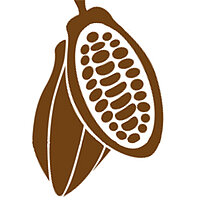
DIFFCacao
Diversifying native fine flavor cacao production in Peru for enhanced productivity and income
Ingolf Steffan-Dewenter, Justine Vansynghel
Funding: Federal Ministry for Economic Cooperation and Development, Germany
Summary: The project “Diversifying native fine flavor cacao production in Peru for enhanced productivity and income” has the goal to support Peru in positioning itself as global leader in Native Fine Flavor Cacao (FFC), positioning through science-based guidance and capacity development for significant and suitable improvement in productivity of native FFC plantations, quality and added value, with livehood benefits for cacao growers and enhanced natural capacity. Co-develop and implementation with smallholder farms, cooperatives, and other stakeholders within and outside of the value chain a technical and institutional framework for realizing the full productive and marketing potential of native FFC in Peru through strategic of native cacao genetic diversity and optimized management shade and associanted biodiversity.
![[Translate to Englisch:] LogoEcodeal Pic:LogoEcodeal](/fileadmin/_processed_/a/1/csm_Logo_Ecodeal_f9c8a36536.png)
ECODEAL
Enhancing biodiversity-based ecosystem services to crops through optimized densities of green infrastructure in agricultural landscapes
Ingolf Steffan-Dewenter, Emily Martin, Andrea Holzschuh, Elena Krimmer, Jochen Krauß, Fabian Bötzl
Funding : Biodiversa/BMBF, Apr 2015-Mar 2018
Summary: Ecological intensification relies on ecosystem services to substitute external inputs in agriculture and has been proposed as a way to achieve high yielding, stable and sustainable crop production, while allowing to reach other societal targets such as nature conservation or human health. Pollination and natural pest control are key ecosystem services that can reduce pesticide use and increase crop yield quantity and quality. Organisms delivering these services depend to a large extent on non-crop habitats, or "green infrastructure" in the landscape, as cropland is not well suited as a habitat all year round. ECODEAL is a European research Biodiversa project assessing the impacts of green infrastructure on the delivery of ecosystem services and consequences for individual farmers and the whole society. The project aims to answer the following questions: How much green infrastructure do we need to maintain stable communities of ecosystem service providers, and a high flow and stability of the services to the crop? Which type or combination of green infrastructure, old or young flower areas, arable fallows, seminatural grasslands, optimises farmland biodiversity and ecosystem services? Since establishing non-crop habitat comes at a cost, which densities of green infrastructure will enhance crop yield and populations of service (or conservation) relevant species while providing net increases in crop productivity as well as net economic benefits to the farmer? ECODEAL will answer these questions.

F&E Vorhaben Klimawandel
Anpassungskapazität ausgewählter Arten im Hinblick auf Änderungen durch den Klimawandel
Elisabeth Obermaier
Funder: Federal Agency for Nature Conservation, Oct 2011 – Oct 2013, Subproject: Influence of temperature and humidity on development and survival of beetles in dead wood
Summary: In the F & E Project adaptation capacities of selected species to climate change in terms of their plasticity, genetic adaptation and migration capacity are investigated by means of literature search, data base analysis and field and laboratory experiments. For this 50 especially endangered species by climate change will be selected from a list of priority species of the BfN with the help of a criteria check list. These will be closer investigated by the consortium. (Experimental focuses: bats, amphibians, beetles, butterflies, biotic interactions)
![[Translate to Englisch:] LogoForkast Pic:LogoForkast](/fileadmin/_processed_/b/3/csm_Logo_Forkast_e18ed374fd.png)
FORKAST
Auswirkungen des Klimas auf Ökosysteme und kilimatische Anpassungsstrategien
Ingolf Steffan-Dewenter, Jochen Krauss, Annette Leingärtner, Bernhard Hoiss
Funder: Bavarian Ministry of Science, Research and Art (StMWFK) within the framework “Climate Programmes in Bavaria 2020), Jan 2009 – Dec 2011
Summary: In the FORKAST project we study the effects of climate change, extreme events and habitat fragmentation on species richness and biotic interactions. One focus lies on the adaptation strategies of different species groups along and altitudinal gradient. Another focus is the experimental simulation of advanced snowmelt, delayed snowmelt and drought stress. In the experiment we record phonologies, herbivory and pollination as well as changes in food plant quality. Species group: day active lepidopterans, wild bees, syrphids, bumble bees and vascular plants. Study region: National Park Berchtesgaden. Habitats: extensive meadows along an altitudinal gradient. Methods: transects, climate experiments, photo eclectors, CHN-analysator.
![[Translate to Englisch:] LogoExp Pic:LogoExp](/fileadmin/_processed_/2/2/csm_Logo_exploratories_7481e1e160.jpg)
BiodiversitiyExploratories-InsectScale
Effekte von Landschaftskontext und Landnutzungsintensität auf Biodiversität und multitrophische Interaktionen zwischen Pflanzen, Bestäubern, Herbivoren und ihren natürlichen Feinden
Ingolf Steffan-Dewenter, Juliane Steckel, Michaela Bellach
Funder: DFG priority program, 2008 – 2011
Summary: The project ‚InsectScale’ includes the study of correlation of landscape structure and local habitat quality on trap nesting bees, wasps, and their natural enemies. The influence of management intensity and local management strategies on trophic levels still remain unknown so far. This study aims to offer a model system of trap nesting bees, wasps and their antagonists. The data can contribute to a new insight into the impact of landscape complexity on ecosystem functions like pollination pest control. Species groups: trap nesting bees, wasps, and their natural enemies. Research areas: Schwäbische Alb, Hainich, Biospherenreservat Schorfheide-Chorin. Habitats: differently managed grasslands. Methods: field work, landscape structure analyses.
![[Translate to Englisch:] InsectTiming Pic:InsectTiming](/fileadmin/07020300/zoo3/Zoo3_WebRefresh/forschung/Logo_InsectTiming.png)
InsectTiming
Timing bei Insekten: Mechanismen, Plastizität und Fitnesskonsequenzen
Ingolf Steffan-Dewenter, Stephan Härtel, Andrea Holzschuh, Jochen Krauß, Hans-Joachim Poethke, Thomas Hovestadt
Project C2 Steffan-Dewenter/Härtel
Timing of colony phenology and foraging activity in honeybees
Project C3 Krauss
Timing and phenology shifts in interacting plant – herbivore – predator systems
Project C4 Holzschuh
Timing in plant-pollinator interactions
Project C6 Poethke/Hovestadt
The evolutionary value of timing and timing precision in insect phenology
Funder: DFG, 2013-2017
Summary:
Timing plays an important role in all living systems. Endogenous clocks enable organisms to anticipate and adapt to daily or seasonal variation in environmental conditions. Being at the right time at the right place crucially determines the chance to find sufficient food, the success of mating, the success in raising brood, the chance to synchronise with mutualistic interaction partners and the likelihood to escape antagonists or harmful environmental events. Thus, proper timing of development, maturation, population phenology and a wide range of different behaviours is of paramount importance for the reproductive success and survival of all animals. Under laboratory conditions, the molecular basis of daily timing via endogenous clocks is intensively studied in few model organisms such as Drosophila melanogaster. However, little is known about the functional impact of such clocks in real nature. Our knowledge on timing mechanisms on time scales exceeding one day is even scarcer and restricted to few species. We also do not know how endogenous clocks and other timing mechanisms promote the adaptation to changing environmental conditions. Further, the impact of clocks and other evolutionary achieved timing mechanisms on the fitness of individuals, eusocial insect colonies, or on the synchronisation of multitrophic biotic interactions are little understood.
The proposed Collaborative Research Centre (CRC) will address these important questions using anintegrative approach. We will focus on insects, since insects are in particular masters in behavioural timing and in adapting quickly to changing environmental conditions, which made them the predominant animal taxon on our planet with enormous ecological impact. We will investigate mechanisms of proper timing in selected species at the molecular, cellular and neuronal networklevels, analyze the influence of timing on individual behaviour and interactions in social groups,populations, and communities, and, ultimately, determine the impact of proper timing on fitness. Each of these levels is important for its own sake. Yet, the new and important step we take here is to integrate the analyses of the different proximate/mechanistic levels of timing into an ecological context (success on a daily base, throughout the individual life span, and across generations).
The proposed CRC intends to establish a platform integrating different biological subdisciplines
ranging from molecular biology via neuroethology to ecology in order to promote vivid synergistic interactions among them. The research of this CRC will go beyond current studies in the individual biological disciplines and will bring together ecological concepts with mechanistic research on the molecular, neuronal and organismic level. Our long term goal is to elucidate the proximate mechanisms underlying timing, and at the same time, unravel the ultimate consequences of proper timing for fitness in real ecosystems and in the context of global environmental change.
![[Translate to Englisch:] LogoKiLi Pic:LogoKiLi](/fileadmin/07020300/zoo3/Zoo3_WebRefresh/forschung/Logo_Kili.png)
KiLi
Kilimanjaro ecosystems under global changes: Linking biodiversity, biotic interactions and biogeochemical ecosystem processes
Ingolf Steffan-Dewenter, Marcell Peters, Alice Claßen, Antonia Mayr, Henry Njovu, Friederike Gebert, Jie Zhang
Funder: DFG (research unit FOR1246), Jul 2010 - Jul 2018, Subproject: KiLi Central Project 1, KiLi Central Project 2, KiLi Subproject 7
Summary:
Biodiversity and supportive ecosystem processes maintained by tropical mountain ecosystems are threatened by the combined impacts of global warming and the conversion of natural to human-modified landscapes. In this long term German-Tanzanian research program we assess biodiversity and ecosystem processes along altitudinal and disturbance gradients on Mt. Kilimanjaro (Tanzania, Africa), capitalizing on its world-wide unique range of climatic and vegetation zones.
On a total of sixty study sites in both natural and human-disturbed ecosystems biodiversity (e.g. plants, soil arthropods, ants, bees, frogs, lizards, bats, birds), related ecosystem processes (decomposition, seed dispersal, pollination, herbivory, predation), and biogeochemical processes and properties of ecosystems (climate, soil properties and nutrient status, regulation of water and carbon fluxes, trace gas emissions, primary productivity, functional diversity) are analyzed. Further, in experimental gardens at different altitudes, transplant experiments will be performed to study species adaptability under modified climate conditions. By reanalyzing study sites with historical floral and faunal records we explore shifts in species distributions.
Overall, the data will allow us (1) to infer the influence of climate and anthropogenic disturbance on both biogeochemical processes and biodiversity, (2) to quantify biodiversity-ecosystem functioning relationships along elevational gradients, (3) to estimate resilience and adaptive potential of natural and modified ecosystems to global change, (4) to examine negative feedbacks of disturbance on local climate and ecosystem processes and (5) to quantify temporal shifts in species distributions due to climate and land use change.
Database: https://zenodo.org/communities/kili-dfg/
![[Translate to Englisch:] LogoLibration Pic:LogoLibration](/fileadmin/_processed_/4/6/csm_Logo_Liberation_16ca683d3b.png)
LIBERATION
Linking farmland biodiversity to ecosystem services for effective ecofunctional intensification
Ingolf Steffan-Dewenter, Emily Martin, Sarah Redlich
Funder: EU (FP7), Feb 2013 – Jan 2017
Summary:
Subprojects:
- Identifying general relationships between semi-natural habitats, on-farm management and biodiversity (WP1)
- Linking biodiversity to ecosystem services on farmland (WP2)
- Mitigation of biodiversity loss and promotion of ecosystem services (WP3)
The next few decades will witness a rapidly increasing demand for agricultural products. This growing demand needs to be met largely through intensification (produce more from the same land surface) because there is little scope for an increase in agricultural area. Ecological intensification has been proposed as a promising solution.
Ecological intensification is the optimization of all provisioning, regulating and supporting ecosystem services in the agricultural production process. As such it advocates to maintain or enhance agricultural production through the promotion of biodiversity and associated ecosystem services.
The LIBERATION project aims to provide the evidence-base for the potential of ecological intensification to sustainably enhance food security with minimal negative impacts on the environment. This requires a basic insight in how biodiversity contributes to various ecosystem services and subsequently how ecosystem services contribute to yield and farm income. Key questions that will be addressed are:
• How landscape structure and land-use interact in the provisioning of ecosystem services;
• How farmland biodiversity is related to multiple ecosystem services;
• Whether there are trade-offs between different ecosystem services;
• How ecosystem services are related to farm income;
• How ecosystem services may be influenced by policy measures at the local, national or EU scale.
LIBERATION will focus on the ecosystem services pollination, pest control, nutrient cycling and soil fertility, thus examining both above- and below-ground ecosystem services as well as possible trade-offs and synergies. Implications for greenhouse gas emissions will be explored throughout all activities in the project. Ecosystem service delivery will be expressed in terms of (their contribution to) agricultural yield and in terms of farm income.
![[Translate to Englisch:] LogoScale Pic:LogoScale](/fileadmin/_processed_/b/2/csm_Logo_scales_d28f89564d.png)
SCALES
Securing the conservation of biodiversity across administrative level and spatial, temporal, and ecological scales
Ingolf Steffan-Dewenter, Jochen Krauss, Gudrun Schneider
Funder: EU (FP 7), May 2009 – Apr 2014
Summary: The SCALES project focuses on the effects of spatial and temporal scales on biodiversity, ecosystem functioning and ecosystem services. Our studies include effects of semi-natural habitats on arable land and vice versa (spillover effects). Another focus is on effects of temporal changes in the agricultural landscape on biocontrol. Species groups: carabids, araneae, oilseed rape pests and predators. Habitats: calcareous grasslands, cereal fields, pine forest and oilseed rape fields. Study region: Region Würzburg. Methods: pitfall traps, sampling, GIS.
![[Translate to Englisch:] LogoSTEP Pic:LogoSTEP](/fileadmin/_processed_/b/4/csm_Logo_Step_f97a97f7f6.jpg)
STEP
Status and trends of European pollinators
Ingolf Steffan-Dewenter, Andrea Holzschuh, Verena Riedinger
Funder: EU (FP7), Mar 2010 – Feb 2015, Subproject: Empirical assessment of multiple pressures on pollinators and pollination services across Europe (WP 5)
Summary: The STEP project assesses the impact of our changing environment on pollinators and their pollination services. Our aim is to study the relative importance of potential pressures such as land-use changes, habitat loss and fragmentation, climate change, agrochemicals, pathogens and invasive plants. Our main focus lies on the question how an increase in the cultivation of pollinator-attractive (biofuel)- crops affects pollinators and their pollination service. Here we are interested in consequences for both crop yield and wild plants in semi-natural habitats, which potentially compete for pollinators. Another main focus lies on mitigation strategies which might help to counteract the negative effects of current land-use changes. Here we test the efficiency of sown flower strips in promoting pollinators in agricultural landscapes. Species group: wild bees, honeybees, hoverflies. Habitats: oilseed rape, sunflower, calcareous grasslands, field boundaries, flower strips. Study regions: Würzburg, England, Sweden, the Netherlands, Spain, Serbia. Methods: pollinator Monitoring, GIS.
![[Translate to Englisch:] LogoTerreco Pic:LogoTerreco](/fileadmin/_processed_/3/7/csm_Logo_TERRECO_e4797cc7b9.png)
TERRECO
Complex terrain and ecological heterogeneity - evaluating ecosystem services in production versus water yield and water quality in mountainous landscapes
Ingolf Steffan-Dewenter, Emily Martin
Funder: DFG / KOSEF (International Research Training Group), Apr 2008 – Mar 2011
Summary: The goals of TERRECO, thus, focus on building a bridge between spatial patterns of ecosystem performance in complex terrain and derived ecosystem services critical for human well being. A coordinated assessment framework will be developed for landscape to regional scale applications to quantify trade-offs, and determine how shifts in climate, land use and social response to global change pressures influence ecosystem services. In our subproject we study effects of landscape context and management on insect diversity and biological pest control. Species groups: arthropods and vascular plants. Research area: South Korea. Habitat: agricultural fields, field margins. Methods: Transects, pit fall traps, exclosure experiments, GIS.
![[Translate to Englisch:] LogoWascal Pic:LogoWascal](/fileadmin/07020300/zoo3/Zoo3_WebRefresh/forschung/Logo_Wascal.png)
WASCAL
West African science service center on climate change and adapted land use
K. Eduard Linsenmair, Katharina Stein
Funder: BMBF, 2010 – 2013 pre-phase; 2013 – 2017 main phase, Sub topic: Climate change and biodiversity
Summary: WASCAL is a large-scale research-focused program designed to help tackle this challenge and thereby enhance the resilience of human and environmental systems to climate change and increased variability. It does so by strengthening the research infrastructure and capacity in West Africa related to climate change and by pooling the expertise of ten West African countries and eleven institutions in Germany. WASCAL is organized around three principle components: Competence Center, Core Research Program, Graduate Research Program.




